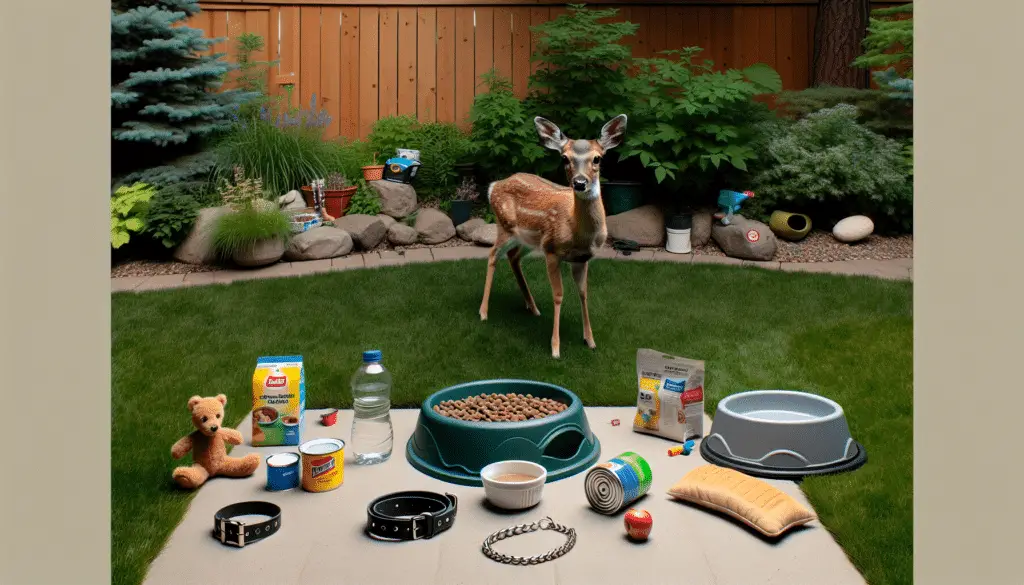Key Highlights
- Keeping a deer as a pet is not recommended due to legal considerations, ethical concerns, and challenges in providing proper care and environment.
- Domesticating wild native animals like deer is against the Missouri Wildlife Code and other wildlife protection laws.
- Deer require specific habitats and diets that are difficult to replicate in a domestic setting.
- Deer can pose behavioral issues and have specific social needs that may be challenging to meet.
- Captive deer may have health issues and are at a higher risk of chronic wasting disease.
- It is better to support wildlife conservation initiatives and volunteer at animal sanctuaries instead of keeping deer as pets.
Understanding the Nature of Deer as Wild Animals
When addressing the question of keeping deer as pets, it is crucial to understand their inherent wild nature. Unlike domesticated dogs and cats that have evolved alongside humans for thousands of years, deer have not undergone this same process.
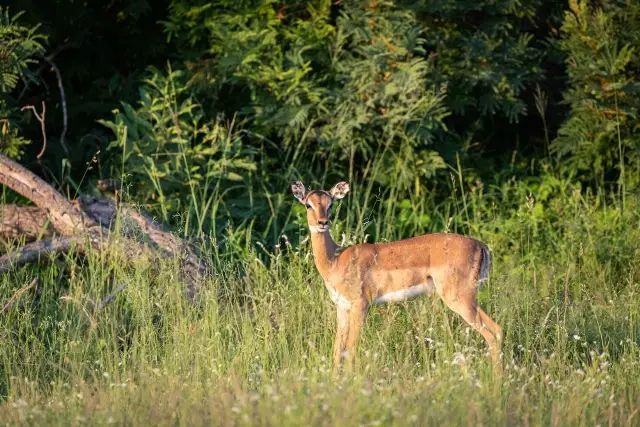
Deer are instinctively wild creatures that are highly adapted to their natural environment, to the changing seasons, and to the presence of predators. Although you may find out it’s possible to keep a deer as a pet in some areas and you may ask yourself ‘Should I keep a deer as a pet’; you should not keep one as a pet.
Is Keeping a Deer as a Pet Legal?
United States law heavily regulates the keeping of wild animals as pets, with specific statutes that vary from state to state. Some jurisdictions may offer special permits for wildlife rehabilitation or for keeping a deer under highly controlled conditions, which often requires a deep understanding of deer biology and behavior, as outlined in this comprehensive guide to deer biology. However, states like Idaho, Florida, Kansas, Michigan, Minnesota, Mississippi, Missouri, New Jersey, North Dakota, Oregon, and Wisconsin also require special permits to keep deer as pets. In Wisconsin, only white-tailed deer are eligible to be kept with a permit.
For instance, in states like Texas, permits can be issued for “deer breeder” privileges, which might allow someone to care for deer in a restricted setting.
However, these permits are not equivalent to treating a deer as a common pet. It is essential to check local laws and consult wildlife experts before considering a deer as a pet.
Why Deer Aren’t Suited to Being Pets
Deer, with their natural grace and beauty, might seem like attractive candidates for pets. However, several factors make them unsuitable for domestic life. First and foremost, deer have complex dietary needs that require a variety of forage, which is difficult to replicate outside of their natural habitat. A common deer diet features various plants, as observed during specific deer feeding times.
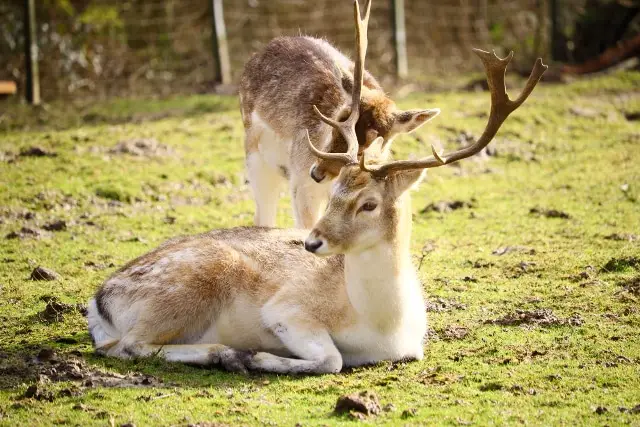
In addition, deer are migratory animals with a strong impulse for movement. Their bodies are designed for running and jumping, which is evidenced by their ability to jump high fences effortlessly, an adaptation crucial for escaping predators and for navigating their environment in search of food and resources.
Deer Behavior and Human Interactions
Understanding deer behavior is key to recognizing why they are not suitable pets. Deer are known for certain behaviors such as stomping when suspicious or staring to assess threats. These behaviors, while intriguing in the wild, can become problematic and even dangerous in a home setting.
Additionally, as seasons change, so does deer behavior. Breeding seasons, such as the rut, can lead to aggressive behaviors in bucks, which can be hazardous to humans and property. This is not a trait that can be trained away, as it is deeply rooted in their instincts.
Health Risks and Responsibilities
Keeping a wild deer as a pet also presents several health risks. Deer can carry various diseases and parasites, such as ticks that may spread Lyme disease. A detailed overview of these concerns is provided in this guide on deer parasites. Such health risks can affect not only the deer but also human caretakers and any domestic animals within close proximity to the deer. As noted by the Missouri Department of Conservation (MDC), wild animals should not be considered pets and it is important to follow their guidelines, especially in regards to Chronic Wasting Disease (CWD).
Furthermore, deer require large, secure spaces to roam and live healthily, which most homeowners cannot adequately provide. Their enclosures need to be constantly maintained to prevent escape, and ensuring the safety of the deer can be both time-consuming and costly.
Legal and Ethical Considerations
Apart from the practical issues of husbandry, there are important legal and ethical considerations to take into account when considering keeping a deer as a pet. For example, many states have outlawed the keeping of deer as pets, due to concerns about public safety and animal welfare. Those who are caught without proper permits may face hefty fines or legal repercussions. In some states, such as Colorado, New Hampshire, and Vermont, deer may be kept as pets with proper permits. However, it is important to research and understand the laws and regulations in your state before considering keeping a deer as a pet.
Ethically, wildlife experts agree that wild animals, including deer, should not be removed from their natural environments. This aligns with a respect for wildlife and ecosystems, a sentiment echoed in discussions about human interactions with deer and other wildlife.
Potential Exceptions for Deer as Pets
There are rare situations in which a deer may become habituated to humans, such as when rescued as a fawn or due to injury. Even so, wildlife professionals typically rehabilitate these animals with the intention of returning them to the wild, ensuring they maintain their natural instincts and behaviors.
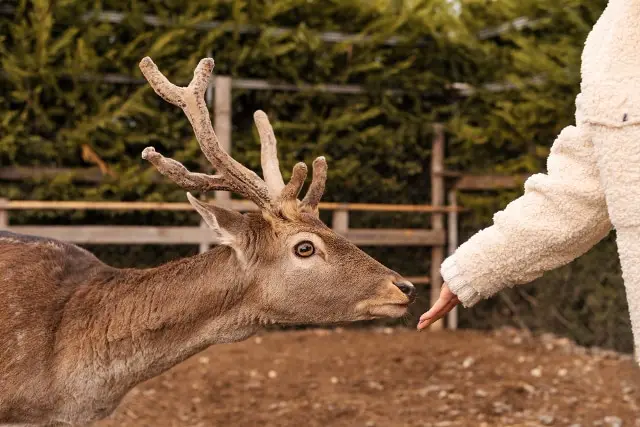
In such circumstances, products like specialized fawn milk replacers are used to provide nutrition similar to that of a mother’s milk. Reviews mention products like ‘Fawn-Lac Milk Replacer’ as beneficial in these temporary scenarios and highlight the success in eventual wild release.
Find This and More on Amazon
Alternatives to Keeping Deer as Pets
For those who wish to connect with deer without attempting to domesticate them, there are alternative approaches. Participating in deer conservation efforts or visiting deer reserves where you can observe these majestic animals in their natural setting are enriching experiences. Such involvement promotes understanding and respect for wildlife, aligning with responsible stewardship practices. Additionally, visiting places like Nara Park, Japan, where Sitka deer roam freely and are comfortable enough to approach humans, allows for a unique and authentic interaction with these animals in their adulthood.
The Debate on Domestication vs. Wild Nature
The debate on domesticating wild animals, including deer, is a complex one. While some argue that domestication can provide a safe and secure environment for these animals, others believe that it is unnatural and goes against their inherent wild nature. Domesticated deer may lose their natural instincts and behaviors, leading to behavioral issues and potential health problems. Keeping deer in captivity also raises questions about their quality of life and whether it is fair to deprive them of their natural habitat and social structures. It is important to weigh the potential benefits and drawbacks of domestication before deciding to keep a deer as a pet.
Challenges in Raising a Deer as a Pet
Raising a deer as a pet comes with its challenges. One of the main challenges is dealing with behavioral issues. Deer are wild animals and may exhibit behaviors that are not typical of domesticated pets. They may become aggressive or exhibit destructive behaviors if they are not properly trained and socialized. Additionally, deer require regular veterinary care, including vaccinations and check-ups, to ensure their health and well-being. They also have social needs and require companionship and interaction with other deer. Meeting these challenges requires time, effort, and resources to provide the necessary care and support for a pet deer.
Behavioral Issues and Social Needs
Deer are wild animals with unique behavioral traits that can present challenges when kept as pets. They may exhibit aggressive behavior, especially during the breeding season when males can become territorial and can pose a risk to humans and other animals. Additionally, deer need social interaction and companionship with other deer. Without proper socialization, they may become lonely, stressed, or exhibit destructive behaviors. Providing a suitable environment with opportunities for social interaction is crucial for the well-being of a pet deer. It is important to consult with experts and seek guidance on how to address and manage any behavioral issues that may arise.
Veterinary Care for Deer
Proper veterinary care is essential for the health and well-being of a pet deer. Regular check-ups, vaccinations, and preventive care are necessary to ensure that the deer remains healthy. Deer can be susceptible to various diseases and parasites, and early detection and treatment are vital. It is important to find a veterinarian with experience and knowledge in treating deer and consult with them on the proper care and treatment for your pet. Additionally, it is crucial to stay informed about any specific health concerns or diseases that may affect deer in your area and take appropriate measures to prevent them.
Success Stories: People Who Have Kept Deer as Pets
While keeping a deer as a pet is not recommended, there are some success stories of people who have successfully cared for deer in a domestic setting. These stories serve as case studies and provide valuable insights into the challenges and rewards of keeping deer as pets. They offer personal experiences and lessons learned from individuals who have dedicated time, effort, and resources to meet the specific needs of deer in captivity. However, it is important to note that these success stories are exceptions rather than the norm, and they require extensive knowledge, experience, and resources to replicate.
Case Studies and Personal Experiences
One example of a successful deer pet owner is Jane, who rescued a young fawn after its mother was hit by a car. Jane provided the fawn with proper nutrition, a safe and secure enclosure, and regular veterinary care. The fawn, named Daisy, thrived under Jane’s care and developed a strong bond with her. Another case study involves Mark, who acquired a domesticated deer from a wildlife rehabilitation center. Mark dedicated time to training and socializing the deer, and it became a beloved member of his family. These case studies highlight the dedication and commitment required to care for a deer as a pet and the unique experiences and rewards that can come from it.
Frequently Asked Questions
Is it legal to keep a deer as a pet?
Legality varies by jurisdiction, but in general, it is either illegal or requires special permits to keep deer as pets due to public safety and animal welfare concerns. Always consult local wildlife authorities for the most accurate information.
What are some reasons why deer do not make good pets?
Deer are wild animals with specific dietary, space, and behavioral needs that are not suited to a domestic environment. Additionally, they can carry diseases and require expert care, which can be hard to provide in a home setting.
Can a rescued fawn be kept as a pet?
Typically, rescued fawns are rehabilitated with the goal of returning them to the wild. Professionals use specialized products to mimic natural conditions as closely as possible and avoid domestication to ensure the deer’s survival in its natural habitat.
Understanding Deer Domestication and Its Challenges
When considering the domestication of any wild animal, including deer, it is imperative to assess the potential challenges this endeavor presents. Domestication requires generations of selective breeding, a process that deer, also known as caribou, have not been subjected to in the way that dogs, cats, or farm animals have. This has significant implications for their behavior, health needs, and overall suitability to human-controlled environments.
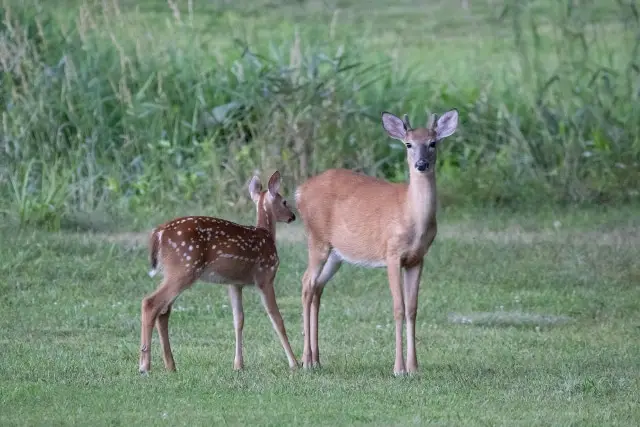
Deer, being prey animals, are hardwired with a flight response that makes them skittish and unpredictable, which can be exacerbated in confined spaces typical of most homes or small properties. This innate tendency is a survival mechanism in the wild, where the interaction between deer and predators shapes their existence.
Deer and Their Impact on Local Ecosystems
Another critical aspect to consider is the impact domesticated deer could potentially have on local ecosystems. Wild deer play a pivotal role in their natural habitats. They act as seed dispersers and their foraging habits, while sometimes problematic when populations are too high, typically contribute to the health of forests and grasslands. However, their droppings can be a bit of a nuisance for homeowners and gardeners.
By removing deer from their ecosystems, you may inadvertently disrupt these natural processes, which could have far-reaching effects on other species. This is particularly true when considering endangered deer species, whose conservation status may rely heavily on their contribution to their native environments.
Interaction with Domestic Animals
Introducing a deer to a household with existing pets can present significant challenges. Deer, being significantly larger and stronger than most domestic animals, can unintentionally cause harm even with playful or startled movements. While some might think that raising fawns around domestic pets might foster harmony, the unpredictability of wild instincts often disrupts this notion. However, if you do find yourself in a situation where you must interact with a deer and your domestic animals, the best thing you can do is to proceed with caution and closely monitor the situation.
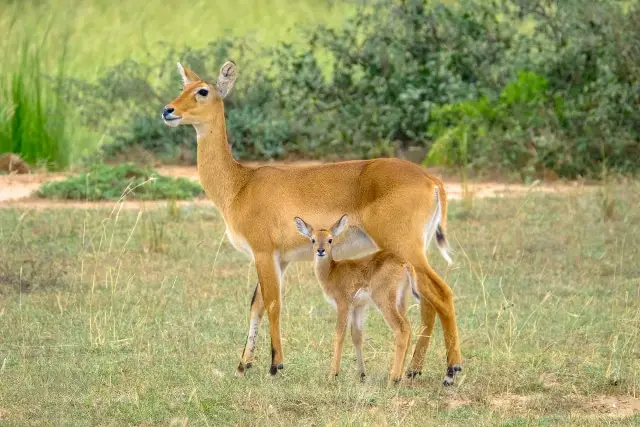
Moreover, deer may carry and transmit parasites and diseases not only to humans but to other domestic animals. This could inadvertently lead to an increase in veterinary bills, and more importantly, pose significant health risks to all parties involved.
Training and Deer Behavioral Expectations
Contrary to domestic pets, deer do not respond to training in the same manner. While they may recognize feeders or individuals who offer food, there is a profound difference between this type of conditioning and truly domesticated behavior based on a mutual understanding and trust.
Behavioral expectations must be set accordingly, and prospective deer caretakers must understand that behaviors such as stomping, fleeing, and seasonal aggression related to rutting are deeply ingrained and impossible to train away. This is not a failure on the part of the animal but rather an affirmation of their wild essence, especially during the busiest days of the season.
Costs Associated with Keeping a Deer
One must consider the financial implications of attempting to keep a deer. The cost of constructing a suitable, secure enclosure is significant, and it must be large enough to allow for the deer’s natural behaviors like grazing, running, and jumping. In addition, the health care costs of a deer should not be underestimated. From routine veterinary care to addressing any potential emergencies, expenses can mount swiftly.
When contemplating such an undertaking, it is crucial to factor in the long-term commitment and ascertain whether it is financially feasible. It’s not just about providing a space and food; it’s about ensuring a dignified quality of life for a creature that is not meant to be confined or controlled.
Deer and Human Safety Considerations
Safety is paramount when considering the proximity of deer to human living spaces. The risks of physical harm should not be understated, especially with males during the rutting season. Antlers and hooves can be formidable weapons when a deer feels threatened or challenged.
The potential for accidents or injuries is not confined merely to their rutting behavior; even a scared or startled deer can become dangerous. This is heightened in cramped or unnatural environments, making the idea of a pet deer not only challenging but also hazardous.
Recognizing the Need for Freedom in Deer
At their core, deer are emblematic of the wild and the free – qualities that are diminished when they are removed from their natural habitats. Their need for wide-ranging territory, the impulse to migrate seasonally, and the complex dynamics within their social groups are all fundamental to their well-being.
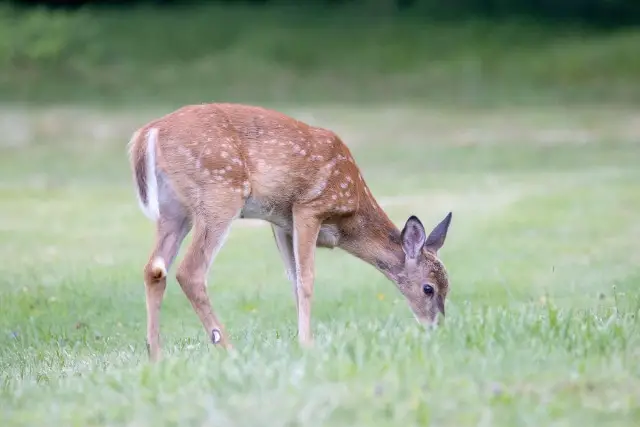
Recognizing and honoring their intrinsic nature is crucial when debating the idea of keeping them as pets. Deer thrive when they are free to roam and interact with their environment and peers, as they have evolved to do over thousands of years.
Understanding Legal Implications of Rehabilitating Wildlife
Even those who are licensed to rehabilitate wildlife, including deer, must follow strict guidelines that prioritize the animal’s well-being and eventual return to the wild. Products such as ‘Fawn-Lac Milk Replacer’ are carefully formulated to aid in this process, as emphasized by reviews and experts in deer care.
All responsible rehabilitation efforts focus on minimal human interaction to prevent imprinting and ensure that the rehabilitation process leaves the animal equipped to survive independently once returned to its natural environment.
Rehabilitation and Release: The Ultimate Goal
In the realm of wildlife rehabilitation, the ultimate goal is the successful release of the animal back into its natural habitat. This is a fundamental principle that must be adhered to for the well-being of the deer, as well as the ecological balance of their environment. Tools such as ‘Fawn-Lac Milk Replacer’ are meant to be a temporary solution for nourishment before eventual release, not a long-term arrangement.
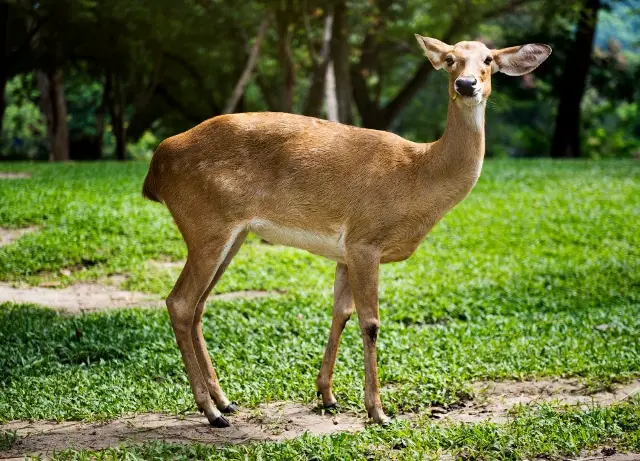
One such example is the practice of rehabilitating orphans or injured deer until they are strong enough to survive on their own. This delicate process should always be aimed at releasing the animal back into its wild habitat, as this article on fawn maturity illustrates.
Embracing Wildlife Stewardship Instead of Ownership
It might be tempting for animal lovers to consider keeping a deer as a pet due to a desire to be close to wildlife. However, true stewardship of wildlife involves respect for their natural behaviors and needs, not ownership. Educational resources, such as visiting local nature reserves or participating in wildlife conservation efforts, are recommended for those wishing to forge a connection with deer without encroaching upon their freedom. This message is especially important in today’s society, where social media platforms like Facebook can often perpetuate the idea of owning exotic animals as pets.
Empathy for these creatures often parallels a longing to protect and preserve them, which can be more effectively channeled into conservation and education rather than attempting to domesticate them, as noted in debates on deer habitats and conservation efforts.
Conclusion: Respecting the Wild Nature of Deer
In conclusion, while it may be possible in some states to keep a deer under special circumstances, it is not advisable nor is it aligned with the animal’s best interests. Deer have evolved to live free in the wild, and the complexities of their care, combined with legal and ethical considerations, make them unsuitable as pets. Embracing their wild nature, respecting their role in ecosystems, and supporting conservation, as stated by Missouri Department of Conservation spokesperson Dan Zarlenga, are the best ways to ensure the well-being of deer.
For those looking for a connection with these beautiful animals, consider supporting a food plot for deer or engaging in activities that help you learn more about them without disrupting their natural lives. By appreciating deer from a respectful distance, we honor their place in the wild and contribute to their preservation for future generations.

